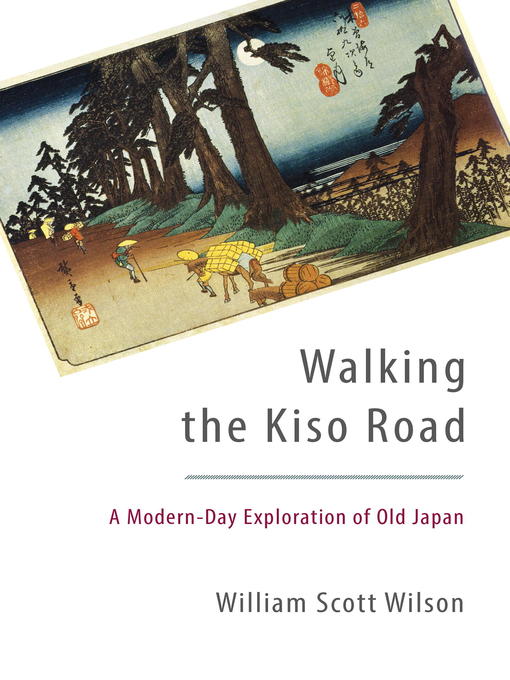
Walking the Kiso Road
A Modern-Day Exploration of Old Japan
کتاب های مرتبط
- اطلاعات
- نقد و بررسی
- دیدگاه کاربران
نقد و بررسی

August 31, 2015
Samurai expert Wilson (The Book of Five Rings) leads a tour through time and space in this engrossing memoir of his three-week hike in 2013 along a 60-mi. stretch of road that weaves through central Japan. The Kiso road, an ancient trade route that is currently home to the modern Chuo railway line, is punctuated by 11 post towns that provide overnight lodgings and the opportunity to step “backward in time.” Wilson invokes the great philosophers who “walked to become more alive.” Opening with the Upper Kiso, the hike unfolds in a series of vividly described meals and historical tidbits about local deities such as Horse-Headed Kannon. Each chapter cites elevation at the outset and concludes with the number of miles covered that day plus hiking time. All along the route, food outranks politics as a subject of conversation, with the Yugawa sake distillery a highlight of the journey. Those familiar with hiking in Japan will smile at the mention of the ubiquitous roadside Jizo statues and the sign that reads, “When it sees trash the mountain cries.” While the book would profit from a map to help readers better understand the terrain, it provides a useful trail guide for hikers, while armchair travelers can enjoy Wilson’s hike vicariously.

September 15, 2015
Resting at traditional inns and temples, enjoying scrumptious meals and relaxing Japanese baths, author/translator Wilson's description of his 60-mile hike between "post towns" that dot the Kiso Road, located in the mountainous Nagano prefecture in central Japan, may initially seem nothing more than a daily register of an individual's travels. However, there is much more to his opus as Wilson's attention to the minutest detail makes it a colorful and informative read. His observations of small statues encountered on his trek reveal elements of the civilization that existed during the Edo period (1603-1868), but he also portrays today's Kiso Road, noting the conveniences left by villagers along the road, such as kettles and tea cups, a ladle by a well, and even a hot-springs foot bath. Wilson's writing has a definite humanistic flair, whether describing numerous innkeepers who would go out of their way in extending hospitality or opining on the necessity of needing a companion from time to time to break away from one's own provincial habits and insularity. He includes haikus, excerpts from travel literature, eerie stories, folk tales, and local histories to bring another dimension to the landscape he traverses. VERDICT An introduction to a lesser-traveled region of Japan that just might get you out from under the reading lamp.--Victor Or, Surrey Libs., BC
Copyright 2015 Library Journal, LLC Used with permission.

























دیدگاه کاربران